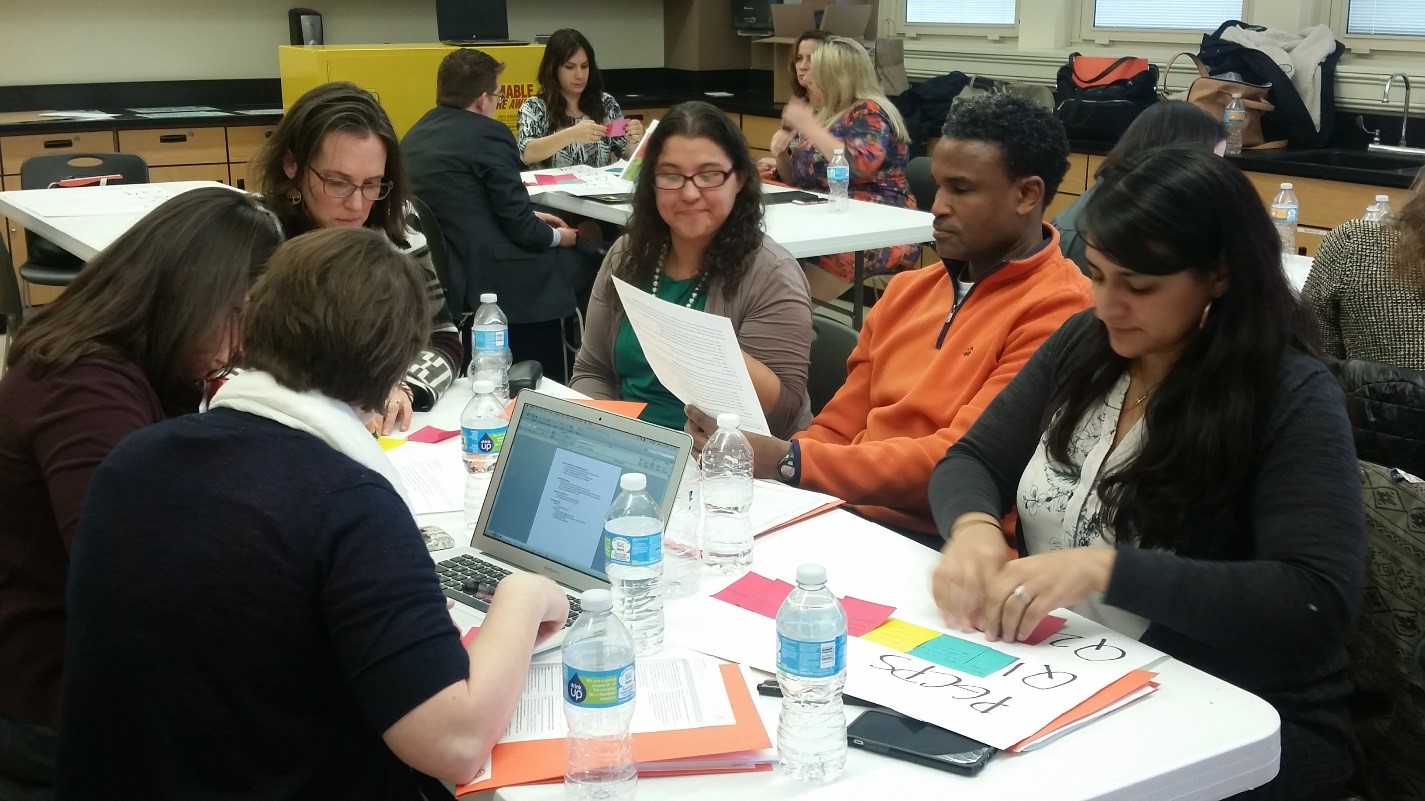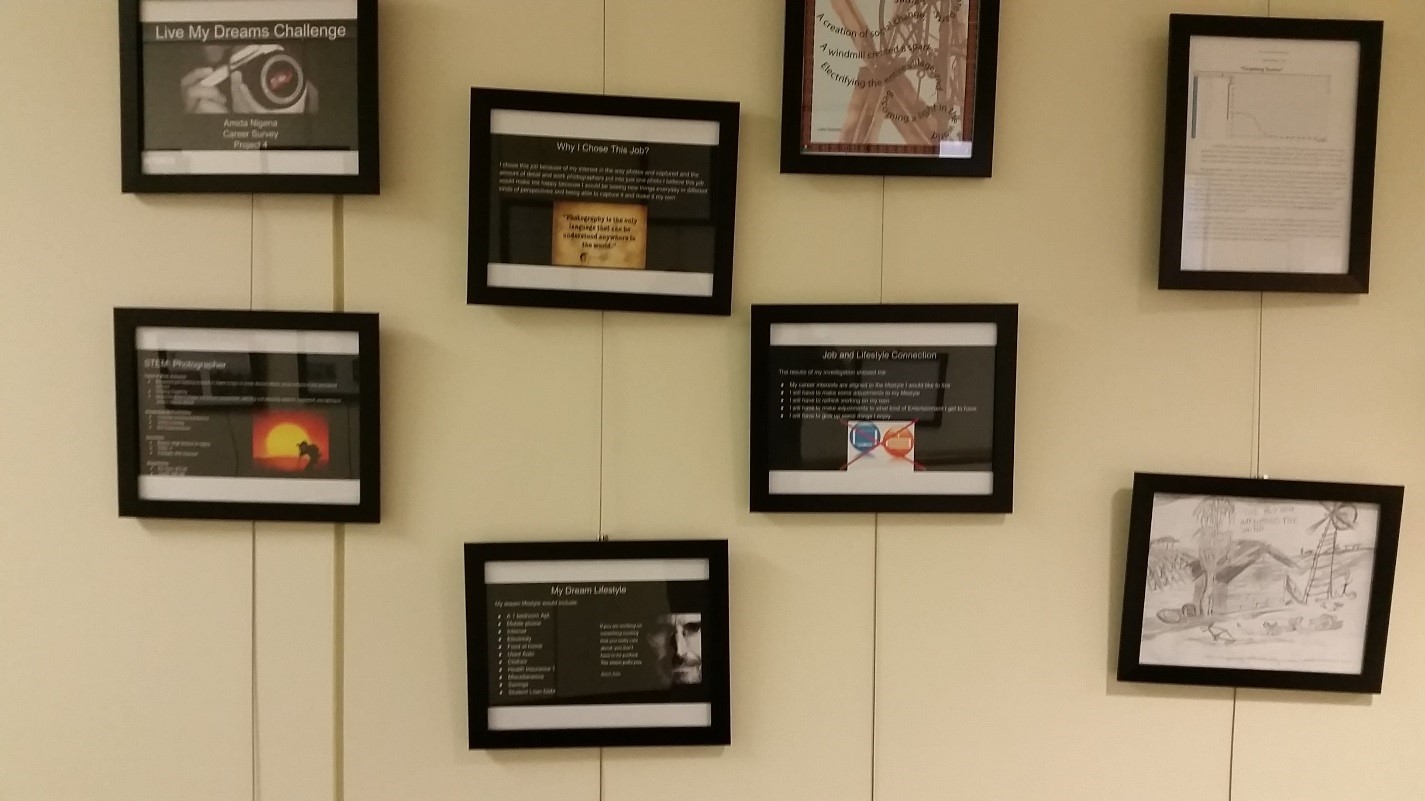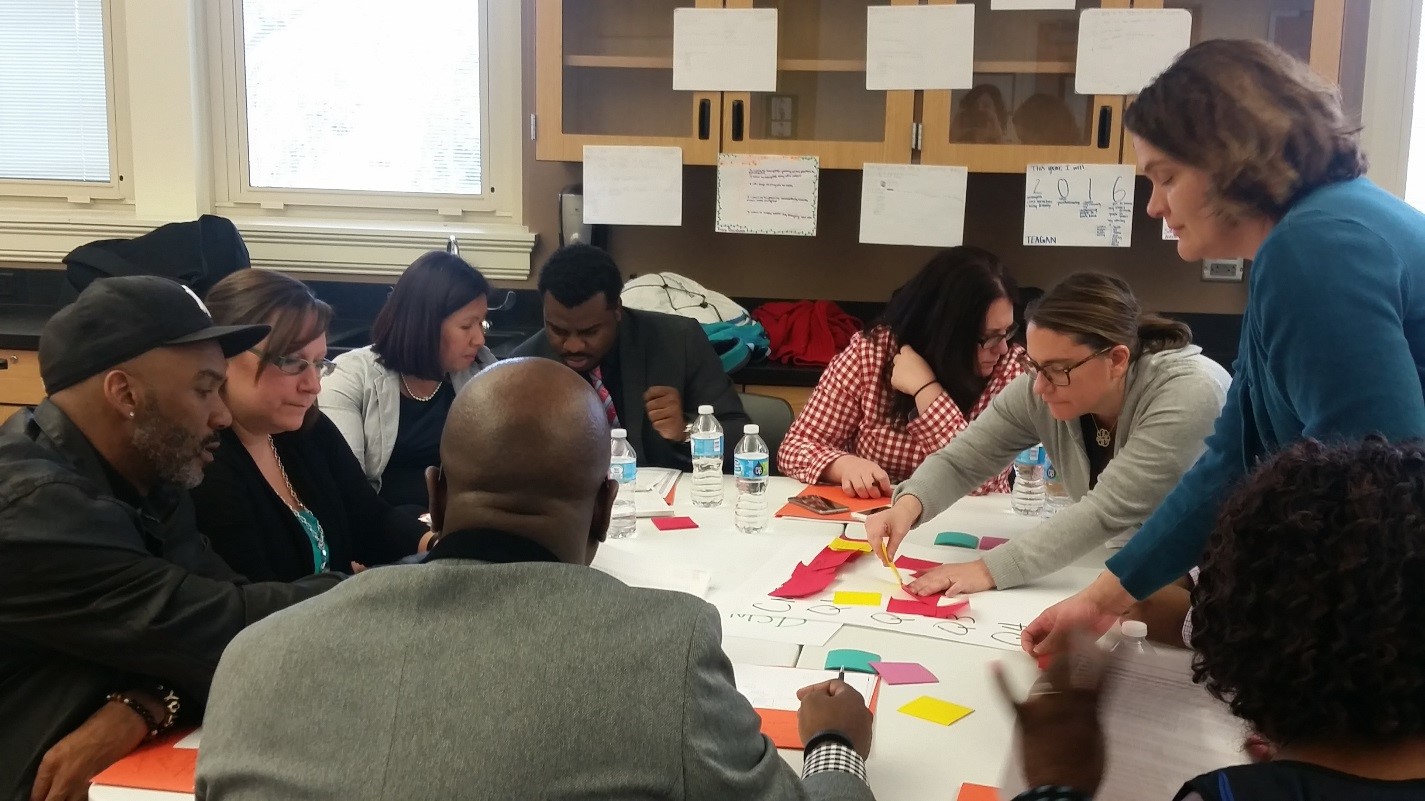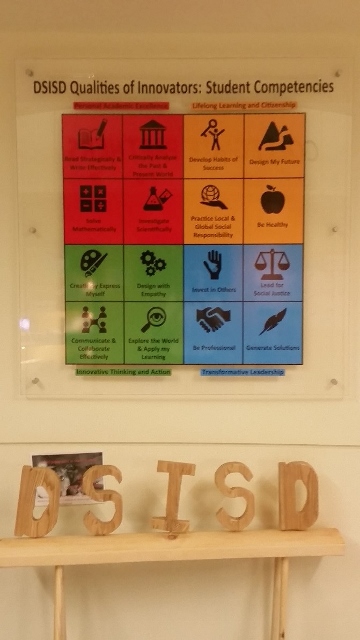
Internationals Network for Public Schools team members debriefing classroom visits at DSISD
Last month, we led our network of school designers and principals of Opportunity by Design schools on a visit to the Denver School of Innovation and Sustainable Design (DSISD). Since opening last fall, DSISD has cultivated a student-centered, mastery-based culture rooted in clearly articulated competencies. Led by Principal Danny Medved, Dean of Curriculum and Instruction Lisa Simms, and Dean of Assessment and Technology Matt Dodge, DSISD is rapidly evolving in response to its students’ needs. In the words of one student, “we feel like DSISD is our school, not the district’s. It’s the students’.”
DSISD was designed as part of Opportunity by Design in partnership with Springpoint, and its design was informed by the 10 school design principles. The school utilizes Summit’s Personalized Learning Plan platform, with its competency-aligned playlists, to enable its personalized, mastery-based approach. We were excited to show our designers and school leaders what a personalized learning tool like Summit’s PLP looks like in action, and how it can be integrated into a coherent whole-school design.

Framed student work in a DSISD hallway
In classrooms, students worked on a combination of teacher-created projects and online playlists. Teachers led conferences with individual students to assess their progress toward a set of cognitive skills that cut across content areas (for example, “synthesizing information” or “developing hypotheses and predictions”). In the hallways, students’ papers—with competency-aligned feedback—were framed on the walls, and the competencies seemed to be posted in all the major common areas.
DSISD’s competencies are split into four categories: personal academic excellence, lifelong learning and citizenship, innovative thinking and action, and transformative leadership. The first category, academic excellence, comprises cognitive skills; the other three categories are non-cognitive, or “soft” skills. On the day we visited, some students were completing questionnaires in Google docs to communicate mastery of non-academic competencies like wayfinding and personal health.

Cleveland Metropolitan School District team members debriefing classroom visits at DSISD
In addition to norming around the competencies, DSISD has begun to embed personalization and mastery into the structure of courses themselves. In its 9th grade English course, DSISD is piloting a personalized program that allows students to move between two “tracks”—standard 9th grade English and AP English. Students can switch tracks at the beginning of each semester, and the flexibility to switch between levels within a single course gives students the confidence to challenge themselves. Stay tuned for more detail on this course structure! We’ll have a post from DSISD’s lead English teacher within the next few months.
Thoughtful instructional design aside, what stood out most about DSISD was the way students spoke about their role in designing their school. In a panel discussion with our school designers, students described how the school has grown since last fall. Originally, DSISD’s instructional model was focused primarily on self-directed learning. Students spent most of their time working through preset playlists with teacher support. The work was rigorous, and students felt they were growing, but they also wanted (and some needed) more direct instruction.
DSISD created a space for student leaders to lobby for adjustments to the school’s model, and Principal Medved and his team listened to their concerns. In response, Medved adjusted the instructional model to enable teachers to give more direct instruction and develop their own projects. The shift gave students the tangible instructional benefits they asked for, but it also sent them a powerful message: As one student said, “if you [have feedback] and you talk to Principal Medved about it, and it’s reasonable, then he will do everything he can” to make a change. It’s obvious that DSISD students feel they’re part of a dynamic community that responds rapidly to their needs and gives them room to grow. According to another student, “I used to have the mindset that once I turned in a paper and got a grade, it was done. The greatest thing about this school is that you can always make yourself and the grade better.”

DSISD’s student competencies on display in a hallway
Check out DSISD’s Student and Family Handbook for a high-level overview of its policies and practices. For an on-the-ground look into this school, here are three videos: Day in the Life, What’s Radically Different, and Designing The School. You can also read a profile of DSISD here. We will be sharing more on their model (and their ELA course) later this year.